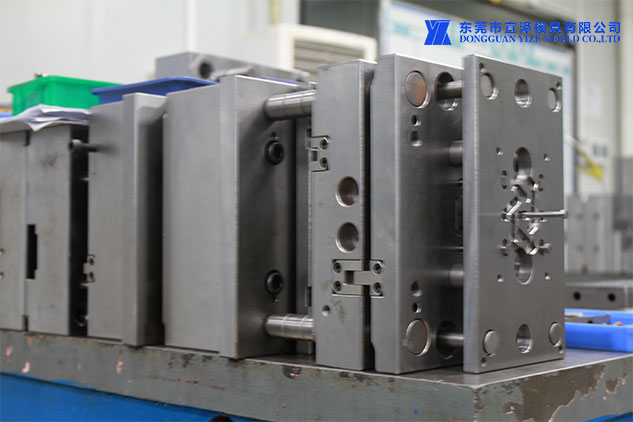Injection Mold spare parts Ejector pin selection principle
(1) Use a Ejector pin with a larger diameter. That is, when there is enough ejection position, the ejector pin with larger diameter and size should be selected.
(2) The specifications of the Ejector pin should be selected as little as possible. When choosing a Ejector pin, the size of the Ejector pin should be adjusted to minimize the size specifications, and at the same time try to choose the preferred size series.
(3) The selected standard injection Mold spare partsshould meet the ejection strength requirements. When ejecting, the Ejector pin should bear greater pressure, in order to avoid the bending deformation of the small Ejector pin.
Some of the reasons and suggestions for Injection Mold spare parts Ejector pin breakage are as follows:
1. The production environment temperature is high, resulting in fatigue, Ejector pin material annealing and failure
2. Whether the dimensional accuracy meets the requirements for use
3. Stress concentration.When machining steps, the shaft is prone to form stress concentration at the parts where the diameter changes suddenly (other workpieces are at the parts where the shape changes abruptly), thus cracking or breaking when external forces (especially radial forces) are encountered in the use project.
4. Heat treatment
Most Injection Mold spare parts Ejector pin require heat treatment during the manufacturing process, and products that are not tempered after quenching or have insufficient tempering time are prone to quality problems such as excessive residual stress;

5. Surface treatment
In order to improve wear resistance, nitriding treatment is often used to check whether the nitriding process is standardized. The higher nitriding temperature causes the material to fail due to tempering or even annealing.
6. Try to avoid radial force on the Ejector pin during use
7. When designing the mold, consider the use of rounded transitions or increase of stress relief grooves in the diameter-reducing part of the hole.
8. Check the size and roughness of the aperture before installing the Ejector pin. If the Injection Mold spare parts Ejector pin is loose after the Ejector pin hole is reamed, the Ejector pin hole is easy to feed, and the Ejector pin is easy to break. Therefore, the matching degree of the Ejector pin and the hole must be mastered.
9. Mould daily maintenance and process debugging
It is better to apply anti-seize oil every time the mold is installed. The daily maintenance is mainly to apply lubricating oil or Ejector pin oil regularly. The Ejector pin of the mold has a gap of 3-5μ, and the general lubricating oil can support up to 3 to 5 days after being applied. The metal powder formed by the dust and mold friction accumulates into the Ejector pin, the slider, and the gap of the inclined roof tunnel. The gap of the mating surface is getting smaller and smaller, the finish is getting lower and lower, and finally it is completely ablated and stuck until it breaks.
10. If the demoulding is too fast, the air intake at the bottom of the product is insufficient, which will form a damping state of negative pressure and increase the resistance of demoulding. The top rod will be subject to great resistance
12. If the ejector rod is relatively thin, it is also easy to be damaged.